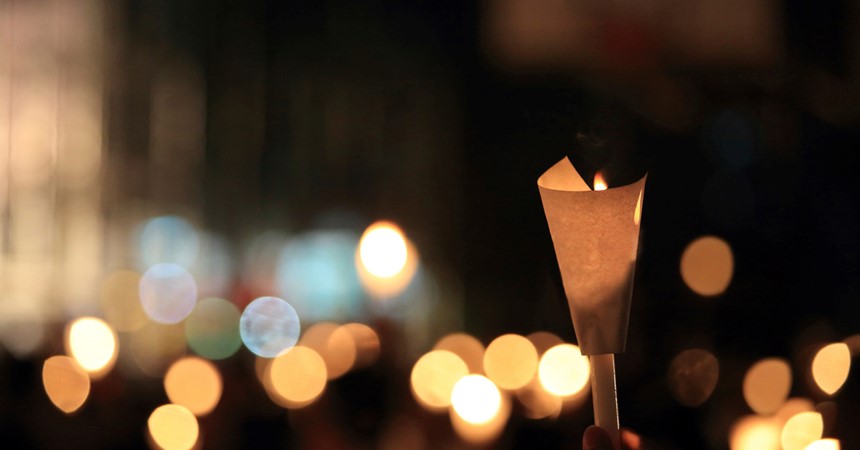The recent executions of Andrew Chan and Myuran Sukumaran in Indonesia on the charge of drug smuggling has brought the death penalty into sharp focus within the Australian public consciousness. The Australian Government, the Opposition, and the community took a clear position on the unjustifiability of the death penalty for these individuals, shown in the consistent pleas and public displays of support for the release, or at least the sparing of life, of Chan and Sukumaran. Aside from this instance of the death penalty, the general topic receives mixed attention in Australia. It is not uncommon, for example, when we encounter some grievous crime to hear calls – serious or not – for the death penalty, if not in public then at least over the dinner table or at the local bar. I am sure that, if Man Haron Monis had survived the Lindt Cafe siege, we would have seen some public discussion on the issue. And debates continue in countries such as the United States, where a jury has recently decided that the death penalty is the most appropriate punishment for Dzhokhar Tsarnaev, following his part in the Boston Marathon bombing.
Whether or not the death penalty can be justified is at once a question of crime and punishment and a question of ethics. The central ethical issue we must grapple with here is whether there are, in some cases, reasons which justify the execution of a criminal instead of some other form of punishment (for example, life in prison). This ethical issue provides an opportunity to look at some interesting insights from the Catholic tradition, including its position on legitimate defence against an aggressor, and recent developments in its position on the death penalty itself.
Catholic ethics has its foundation in the Christian understanding of the human person as created in the image and likeness of God (see Genesis 1:27). This created-ness is the location of human dignity, a dignity which requires no further qualification. What this means in practice is that, in Catholic ethics, a human being has an inherent dignity which doesn’t rely on any qualifiers – such as ethnicity, income, age, or even criminal record. Hence, all persons are to be treated in a manner which honours their dignity. At the most basic level, this means never harming our own lives or the lives of others. It also means that we have a duty to provide the conditions necessary for humans to flourish (such as adequate shelter, food, social life, education, and so on). This understanding of human dignity underlies Catholic ethical thought on issues such as abortion and euthanasia, as well as social thought on issues such as the treatment of refugees, the economy and access to healthcare.
Things become complicated in Catholic ethics when we discover instances in which “the right to protect one’s own life and the duty not to harm someone else’s life are difficult to reconcile in practice” (Pope John Paul II, Evangelium Vitae, no. 55, hereafter referred to as ‘EV’). As a concrete example of this, if I am committed to acting in accordance with human dignity and I am faced with an intruder to my home who is set on killing me and my family, and the only way to stop him is to take his life, what must I do? If I choose not to act in defence, I fail in my duty to protect myself and those in my care. If I choose to act in defence, I am engaged in the direct killing of another person. Catholic ethics is very clear in dealing with this problem – if the only way to “render the aggressor incapable of causing harm” involves taking his life then it is morally unfortunate, but justifiable (see EV, no. 55). The careful measure here is, of course, the word only. The preference should always sit on the side of utilising non-lethal means to “render an aggressor incapable of causing harm”, but in some cases this is simply impossible.
This can be understood as a responsibility to use legitimate defence to protect the innocent. It is within this context that we can begin to approach the issue of the death penalty from the Catholic perspective. Catholic teaching on this issue rests on its understanding of the state’s responsibility to protect its citizens from unjust harm caused by aggressors, such as violent criminals. Such aggressors should be punished for their behaviour, and the purpose of this punishment should be twofold: “defending public order and ensuring people’s safety, while at the same time offering the offender an incentive and help to change his or her behaviour and be rehabilitated” (EV, no. 56). This means that the purpose of punishment is in part rehabilitation – after all, at its heart Christianity is a religion which proclaims forgiveness, even for the most heinous evils.
Nevertheless, it remains a duty for the state to protect its citizens against aggressors, and so punishment also takes on a defensive measure, in a similar way to that of my protection of my family in the aforementioned example. Following from this, in principle, Catholic ethics allows for the death penalty where it is the only possible means of protecting citizens against an aggressor. However in the great majority (if not all) of cases today, this protection can be achieved without recourse to execution. This position is most clearly summarised in article 2267 in the 1995 Catechism of the Catholic Church:
Today… as a consequence of the possibilities which the state has for effectively preventing crime, by rendering one who has committed an offense incapable of doing harm – without definitely taking away from him the possibility of redeeming himself – the cases in which the execution of the offender is an absolutely necessity “are very rare, if not practically non-existent”.
This statement is particularly significant, especially for those interested in the history and development of Catholic moral thought. The previous version of the Catechism (published in 1993) did not include this paragraph. It was added for the 1995 edition of the Catechism after John Paul II’s publication of Evangelium Vitae (from which the quote in the last sentence is taken). It is well known that John Paul II’s position on this issue was strongly influenced by his contact with Sr Helen Prejean, famous for her book Dead Man Walking and the film based on this, which articulates her experience of accompanying a prisoner on death row, and her opposition to the death penalty based on this experience.
The key point to take from this overview is that, in practical terms in the 21st century, Catholic ethics is positioned against the death penalty, since there are means of punishment which can be put in place which protect society and allow for the possible rehabilitation of criminals without recourse to execution. To return to the example with which we started, the execution of Chan and Sukumaran cannot be justified according to the Catholic position, since many different means of punishment for their crimes were available, their deaths were unnecessary to protect innocents, and their clear transformation as persons during their time in prison gives witness to the possibility of rehabilitation.
Dr Dan Fleming is Dean of Studies and Lecturer in Theology and Ethics at The Broken Bay Institute. He holds a PhD in moral philosophy and theology.























































































